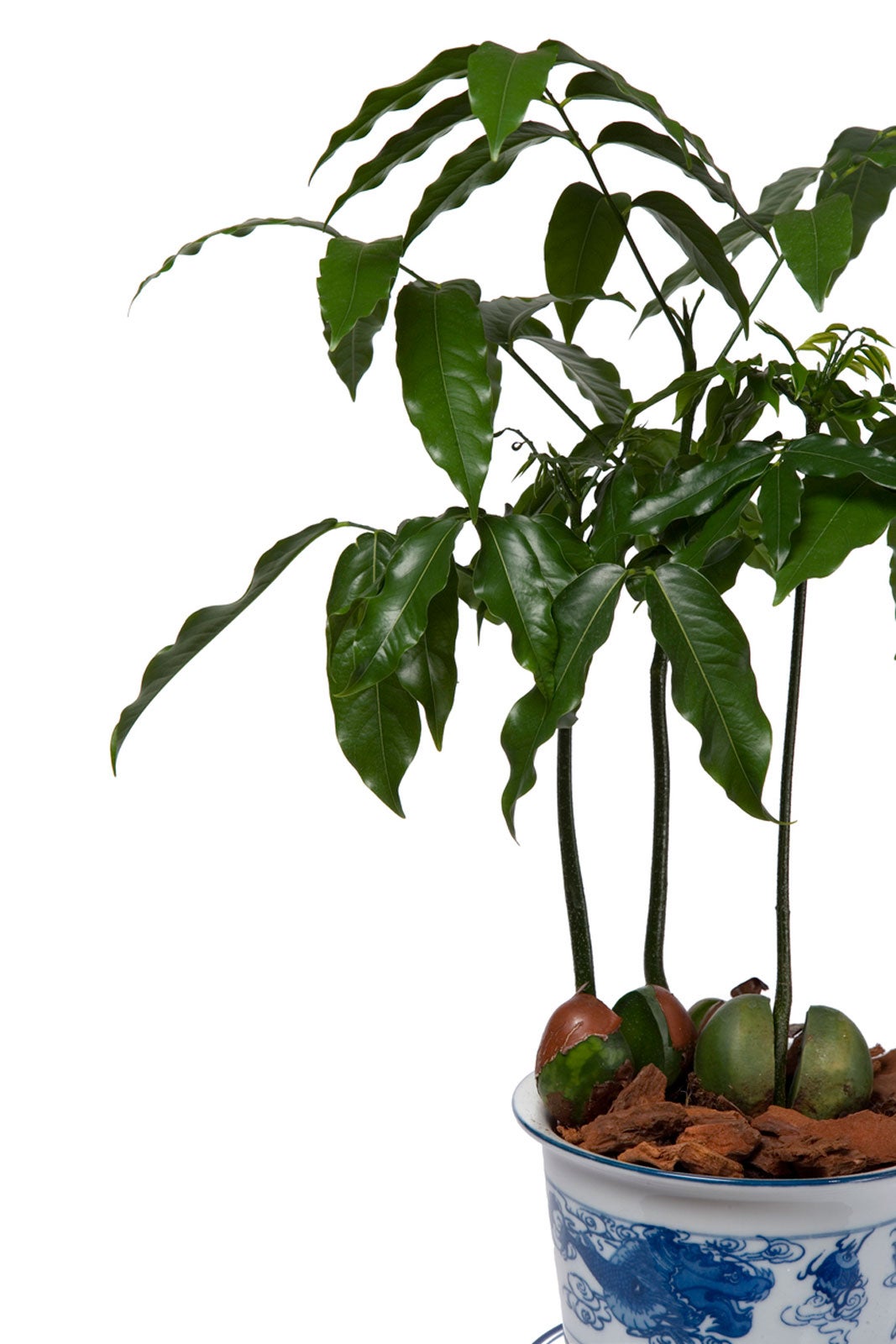Lucky Bean Plant Care – Lucky Bean Houseplant Info


The first time you see young lucky bean plants, you might not believe your eyes. So named because they sprout from a large (golf ball sized) bean-shaped seed, these Australian natives can grow into 130 feet (40 m.) tall shade trees and live for 150 years. Luckily, however, they can be maintained as intriguing houseplants.
What is a Lucky Bean Plant?
Also known as the black bean or Moreton Bay chestnut, the seedlings of lucky bean houseplants (Castanospermum australe) are often sold as novelties with the bean-shaped seed still attached.
The bean eventually dries up, but the plant continues to be a delight with its tropical spring blossoms in bright hues of yellow and red. After blooming, large cylindrical brown seed pods form, each containing three to five bean-shaped seeds.
The leaves of lucky bean houseplants are dark glossy green and form a tree-like cluster at the top of the stem. As houseplants, they can be trimmed to control height and shape or trained as bonsai. In tropical areas such as Florida, gardeners can grow them indoors for a few years, then plant them outside to reach their full potential as shade trees.
Lucky bean plants are hardy in USDA zones 10 to 12. If you choose to plant your lucky bean tree outdoors, choose a sunny location with good drainage. Lucky bean trees develop an extensive root system and can be used for erosion control on banks and hills. It's best not to plant them too close to foundations, drain tiles and sewer lines, as their roots can cause damage.
How to Grow Lucky Bean Plants
Lucky bean houseplants are easily started from seed. Plant the bean-shaped seed in a 2 inch (5 cm.) pot using a well-draining soil mix. Temperatures between 64 and 77 degrees F. (18-25 C.) are required for germination. Keep the soil moist until the seedling is established. Once the seed has sprouted, provide plenty of light.
Lucky Bean Plant Care Tips
- Fertilize: Start when the lucky bean plant is approximately three months old and then periodically throughout its life.
- Temperature: The ideal growing temperature range is 60 to 80 degrees F. (16-27 C.). Protect from temperatures below 50 degrees F. (10 C.). Ideal winter temperatures are between 50 and 59 degrees F. (10-15 C.).
- Control Growth: Trim and shape the tree as needed. Resist the temptation to frequently repot. When repotting, only use a slighter larger pot.
- Flowering: To encourage spring blooming, keep lucky bean trees cooler and drier during the fall and winter months. Allow the soil to dry to a depth of 1 inch (2.5 cm.) below the surface before watering.
It should be noted that lucky bean houseplants are toxic to humans, pets, and livestock. The poison can be found in the leaves and seeds of the lucky bean plant. Care should be taken to prevent pets and small children from ingesting the bean-like seeds.
Gardening tips, videos, info and more delivered right to your inbox!
Sign up for the Gardening Know How newsletter today and receive a free copy of our e-book "How to Grow Delicious Tomatoes".

Laura Miller has been gardening all her life. Holding a degree in Biology, Nutrition, and Agriculture, Laura's area of expertise is vegetables, herbs, and all things edible. She lives in Ohio.
-
 Zinnias On Repeat: 10 Glorious Cut-And-Come-Again Varieties For Endless Summer Bouquets
Zinnias On Repeat: 10 Glorious Cut-And-Come-Again Varieties For Endless Summer BouquetsThese zinnia varieties keep giving all summer, making them the perfect choice for dedicated cutting gardens – or just the occasional homegrown bouquet.
By Ellen Wells
-
 Create A Romantic Garden Straight Out Of Bridgerton: Regency Era Romance In Your Garden
Create A Romantic Garden Straight Out Of Bridgerton: Regency Era Romance In Your GardenTry some romantic garden ideas straight out of Bridgerton. Flowers and gardens in the Regency era were lush and charming and you can get the same look!
By Bonnie L. Grant